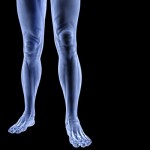 Are You Standing on a Short Leg?
Are You Standing on a Short Leg?
Most of my patients are caught completely off-guard when I tell them that that one of their legs is significantly shorter than the other. As their physical therapist I know that this “unevenness” may have created, or is potentially compounding, the pain my patient has come in to be treated for.
In the adult population, it is not uncommon to have two legs of slightly different lengths. It becomes a matter of clinical importance, however, if that length difference is greater than one centimeter. At that point the entire body is off-balance and must work hard at compensating for its unleveled nature.
Once a leg length discrepancy (LLD) has been discovered, the fix is quite simple: halve the difference and place a small wedge under the heel of the shorter leg. For example, if the right leg measures to be 1.2 centimeters longer than the left, then a .6 centimeter heel lift on the left will correct the problem adequately.
Why not correct the entire difference? Good question. Two reasons—first, the spine, in its mature state, has often developed a fixed, compensatory curvature making it resistant to “change”, and second, it leaves some wiggle room for human error in measurement.
There are two types of leg length discrepancies: true and apparent. True LLDs are treated with heel lifts, apparent LLDs with manual joint and soft tissue manipulation. Therefore, before the legs can be correctly measured, the treating practitioner needs to be sure that any positional (joint) dysfunction within the pelvis has been treated out. Once assured that the pelvis itself is “level”, the measurement is taken between two bony prominences, one on the front of the pelvis and the other on the inside of the ankle.
If you are receiving medical care for low back, hip or knee pain and your leg length has not been assessed, see that this component of your care is attended to. Also, if you already know that one of your pant legs is always longer than the other, but you have no symptoms, it is still a good idea to have this checked (and corrected) so that you do not end up, over time, with uneven wear-and-tear of your body parts.